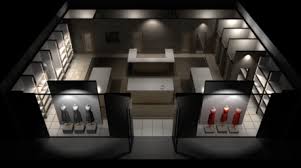There’s more to a successful retail store than the cha-ching of a cash register. In this blog post, H.W. Holmes, Inc. – a commercial construction company specializing in retail buildout and remodels in the Los Angeles area – look at a few ways retail stores can update their feel, enhance the experience of their customer, and maximize ROI.
Retail is a competitive market these days. Brick and mortar stores aren’t only competing with one another but they’re also competing with e-commerce. People don’t even have to leave the comfort of their own home to shop. This is why retail store owners need to ensure they’re not only grabbing the attention of prospective customers but also doing everything in their power to keep them coming back for more.
Remodeling your store’s space is a great way to make your store fresh again to consumers. So, when it comes to introducing some fresh concepts to your space, what’s the best approach? Well, it’s to put yourself in the customer’s shoes. Figuratively, of course. And then try to see and hear your store through that customer’s experience – not yours.
The Visual Experience
Advertising is big on visuals. This is why it’s imperative to make your store as visually attractive as possible. Think eye candy. Draw customers into your store through whatever digital display you can incorporate in your signage. Integrating digital components into your store’s signage is great because it regularly changes.
Of course, the visual aesthetics inside the store are also important. Particularly the mood or ambiance conveyed by your lighting. Sometimes different types of lighting might benefit different sections of the store. Additionally, the colors you paint your walls with must be well-accented and visually pleasing.
The Auditory Experience
The music being played in your store is important. It needs to appeal to the audience you’re coveting. Most retail store concepts want customers to feel relaxed and comfortable. For example, Psychologist World Magazine published an article explaining the subliminal influence ambient music has on shoppers. Obviously, if your target demographic skews a bit younger, the music played in your store might be something louder, more upbeat, and more current. And, on rare occasions, no background music at all might fit the store’s ambiance. But never underestimate the shopper’s auditory experience.
The Convenience Factor
Retail store layouts need to consider customer convenience. Stores should be set up in a manner that allows customers to freely and leisurely move around. Unrushed. Unconstricted. You want them to have time to really look at any product they’re interested in. You don’t want them feeling pushed through. This is why any type of clutter in an already tight space is forbidden.
Another thing stores should consider to bridge the gap between the brick and mortar and online shopping experience is adding a QR code to product tags. This way, the consumer can use their smartphone to get more information about the product without having to track down a sales associate or wait for someone to be available.

